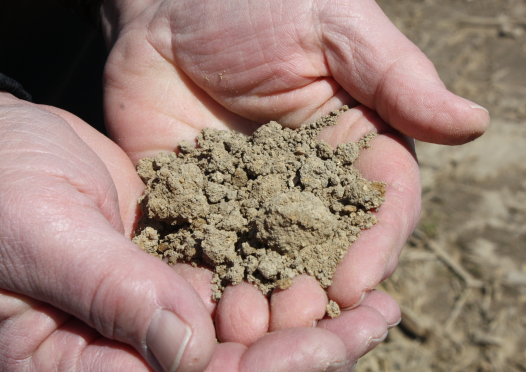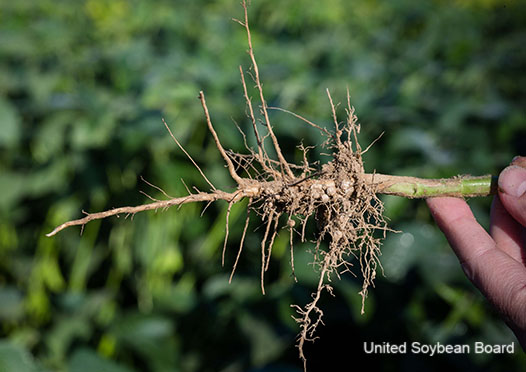ILSOYADVISOR POST
Plant & Soil Health: Making the Connection: Sulfur and Nitrogen Working Together
Maximizing protein production and nitrogen fixation requires an ample supply of sulfur.
Soybeans require both nitrogen and sulfur and they are interrelated. Soybeans require 4.5 to 5 lbs. per acre of nitrogen per bushel and 0.46 lbs. of sulfur per bushel. A 60-bushel soybean crop needs about 300 lbs. nitrogen and about 30 lbs. sulfur. Amino acids end up as the backbone of all proteins—but in different combinations. While nitrogen is a component of all amino acids and proteins, sulfur is a component of specific amino acids: methionine, cysteine and cystine.
A recent research report out of Michigan State University showed that an application of gypsum (1/2 ton per acre) as a sulfur fertilizer increased the sulfur concentration in soybean plants and increased soybean yield 6.6 bushels. However, what was also interesting is that the nitrogen concentration increased from 4.01 to 4.72% while sulfur concentration increased from 0.19 to 0.30 percent.
The higher nitrogen concentration was probably due to the interrelated roles of sulfur and nitrogen in protein synthesis, where sulfur shortages can limit nitrogen fixation, uptake and assimilation by the plant. The appearance of nitrogen deficiencies in plants could be related to sulfur shortages.
Sulfur is a component of numerous enzymes (proteins) that regulate photosynthesis and nitrogen fixation and assimilation by the plant. It’s a component of ferredoxin, an iron-sulfur protein found in the chloroplasts—the site of photosynthesis. Ferredoxin also plays a metabolic role in both nitrogen fixation and sulfate reduction and the assimilation of nitrogen by rhizobacteria living in the nodules.
One of the important enzymes that drive nitrogen fixation is nitrogenase. This enzyme contains considerable amounts of sulfur and converts atmospheric nitrogen to ammonia. In addition ferredoxin acts as an electron transfer agent in both nitrogen fixation and nitrogen assimilation into protein.
The combination of inoculating soybeans along with a sulfur application can potentially increase nitrogen fixation and plant growth and yield. Except for very light or coarse sandy soils, sulfur needs of the soybean crop have generally been supplied by organic matter mineralization or atmospheric deposition. An application of sulfur fertilizer to soybeans was only recommended on soils with suboptimal organic matter or sulfur levels. However, with less atmospheric sulfur deposition today, an application of sulfur products will benefit both corn and soybeans.
Have you considered applying some sulfur ahead of soybeans to maximize nitrogen fixation?
Agronomist Dr. Daniel Davidson posts blogs on agronomy-related topics. Feel free to contact him at djdavidson@agwrite.com.





Comments
Add new comment